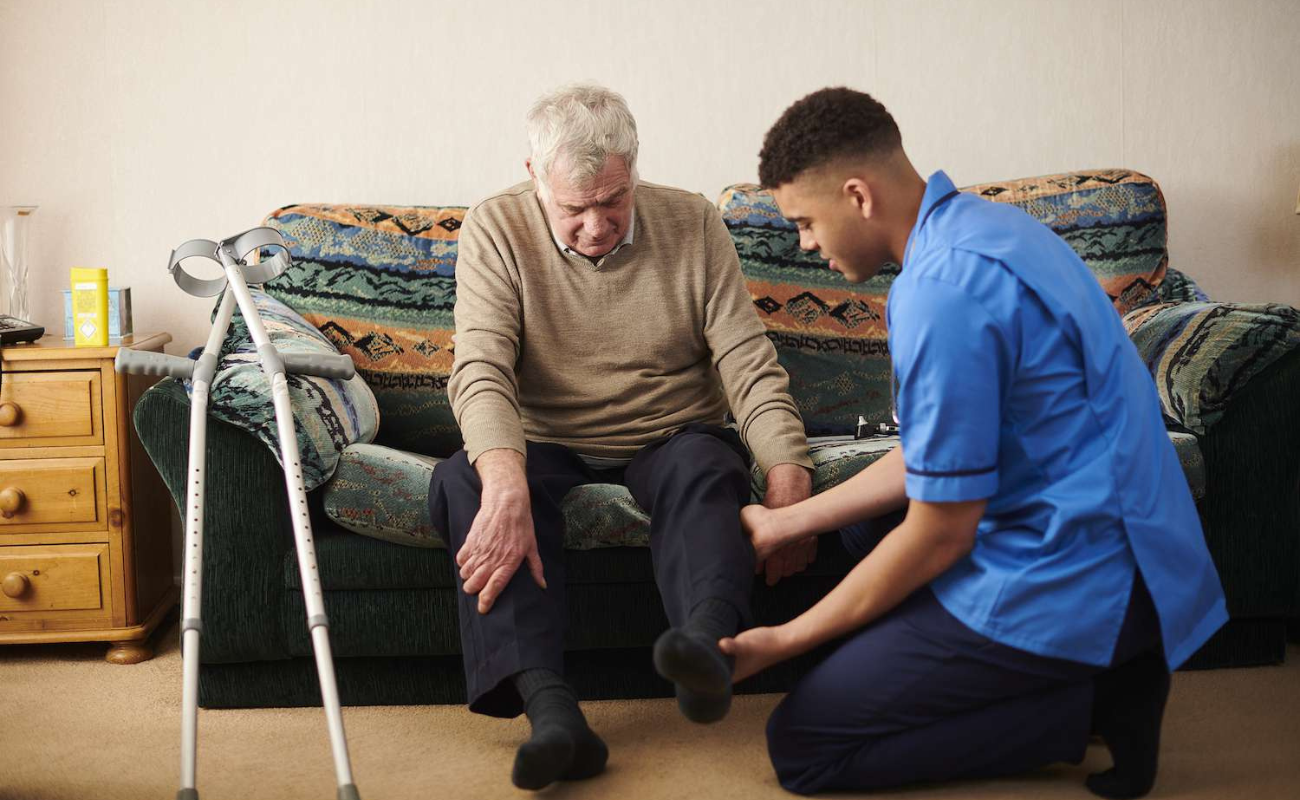Navigating the Road to Recovery: Comprehensive Guide to Rehabilitation After Total Knee Replacement Surgery

January 19, 2024
Total knee replacement surgery is a life-changing journey that can greatly enhance one's quality of life. However, the success of the surgery heavily depends on the rehabilitation process that ensues. This comprehensive guide aims to illuminate the vital aspects of rehabilitation following total knee replacement surgery, offering invaluable insights and practical tips for a successful recovery.
Understanding Total Knee Replacement Surgery
Before embarking on the rehabilitation journey, it is crucial to understand the fundamentals of total knee replacement surgery. This surgical procedure aims to replace impaired knee joints with artificial implants, bringing back function and relieving discomfort. Typical indications for this surgery include osteoarthritis, rheumatoid arthritis, and other degenerative conditions that affect the knee joint.
Immediate Postoperative Care
1. Hospital Stay and Initial Recovery
Following surgery, patients usually stay in the hospital for a few days. Throughout this period, healthcare professionals closely observe the patient's condition, effectively manage pain, and commence the initial stages of rehabilitation. To prevent stiffness and encourage blood circulation, physical therapists guide patients in early mobilization and gentle exercises. This comprehensive approach ensures optimal recovery and well-being.
2. Pain Management
Effectively managing pain is a vital component during the early stages of recovery. To alleviate discomfort, healthcare professionals prescribe a combination of oral and intravenous medications. Additionally, the application of ice packs and elevation can aid in reducing swelling around the surgical site.
Transitioning to Rehabilitation
3. Early Rehabilitation Exercises
A well-structured rehabilitation program is crucial as patients transition from the hospital to home. It includes a series of simple exercises such as ankle pumps, quad sets, and straight leg raises, which aim to enhance muscle strength and joint flexibility. Initially, these exercises are performed under the guidance and supervision of a physical therapist.
4. Assistive Devices
During the initial phases of rehabilitation, it may be advisable to utilize assistive devices like crutches or walkers. These aids offer stability and support, helping to prevent falls and facilitating walking until the knee has developed adequate strength.
Building Strength and Flexibility
5. Progressive Exercises
As part of the rehabilitation process, exercises gradually progress to more challenging ones, focusing on building strength and flexibility. Commonly included in the rehabilitation routine are a range of motion exercises, leg presses, and stationary cycling. These exercises are customized based on the individual's progress and are specifically designed to enhance overall joint function.
6. Aquatic Therapy
Aquatic therapy can greatly benefit individuals undergoing knee replacement rehabilitation. By exercising in water, the joints experience reduced stress while still providing resistance, thus aiding in muscle strengthening and enhancing mobility. This form of therapy is typically recommended once the surgical wound has adequately healed.
Addressing Pain and Swelling
7. Pain Management Strategies
Effective pain management is essential not only in the initial stages but also throughout the rehabilitation process. Alongside traditional strategies, non-pharmacological approaches such as heat and cold therapy can effectively reduce pain and swelling. Furthermore, techniques like massage and acupuncture can complement and enhance traditional pain management methods.
8. Compression and Elevation
After surgery, swelling is a common issue that needs attention. To combat this, consider using compression sleeves or bandages to reduce swelling. Additionally, elevating the leg while resting can help minimize fluid buildup. By combining these practices with prescribed medications, you can take a comprehensive approach to managing postoperative swelling.
Restoring Functionality and Independence
9. Balance and Stability Training
Achieving balance and stability is a vital aspect of knee replacement rehabilitation. Incorporating balance exercises with stability balls or balance pads not only enhances coordination but also mitigates the risk of falls. These exercises play a pivotal role in restoring functionality and promoting independence, thereby contributing to the overall rehabilitation goal.
10. Functional Activities
The rehabilitation process has evolved to incorporate activities that simulate everyday life. By practicing movements such as rising from a chair, ascending stairs, and walking on uneven surfaces, patients can regain confidence and independence in their daily activities.
Long-Term Lifestyle Modifications
11. Maintaining a Healthy Lifestyle
A comprehensive rehabilitation program goes beyond mere exercises and therapy sessions. Embracing a healthy lifestyle plays a crucial role in ensuring long-term joint health. This encompasses maintaining a well-balanced diet, managing weight effectively, and integrating low-impact activities such as swimming or cycling into one's regular routine. By doing so, individuals can optimize their overall well-being and enhance the chances of successful rehabilitation.
12. Regular Follow-ups and Monitoring
Postoperative care extends beyond the completion of a rehabilitation program. It is crucial to have regular follow-ups with the orthopedic surgeon and physical therapist to track progress, address concerns, and modify the rehabilitation plan if necessary. Continual monitoring plays a vital role in ensuring the long-term success of knee replacement surgery.
Conclusion
Recovering from total knee replacement surgery is a complex process that requires dedication, patience, and a comprehensive approach. By understanding the different stages of rehabilitation, implementing customized exercises, and making lifestyle adjustments, individuals can embark on a successful journey toward regaining knee function and enhancing their quality of life. It's important to remember that each person's recovery is unique, and collaborating closely with healthcare professionals ensures a personalized rehabilitation plan that addresses specific needs and goals.
